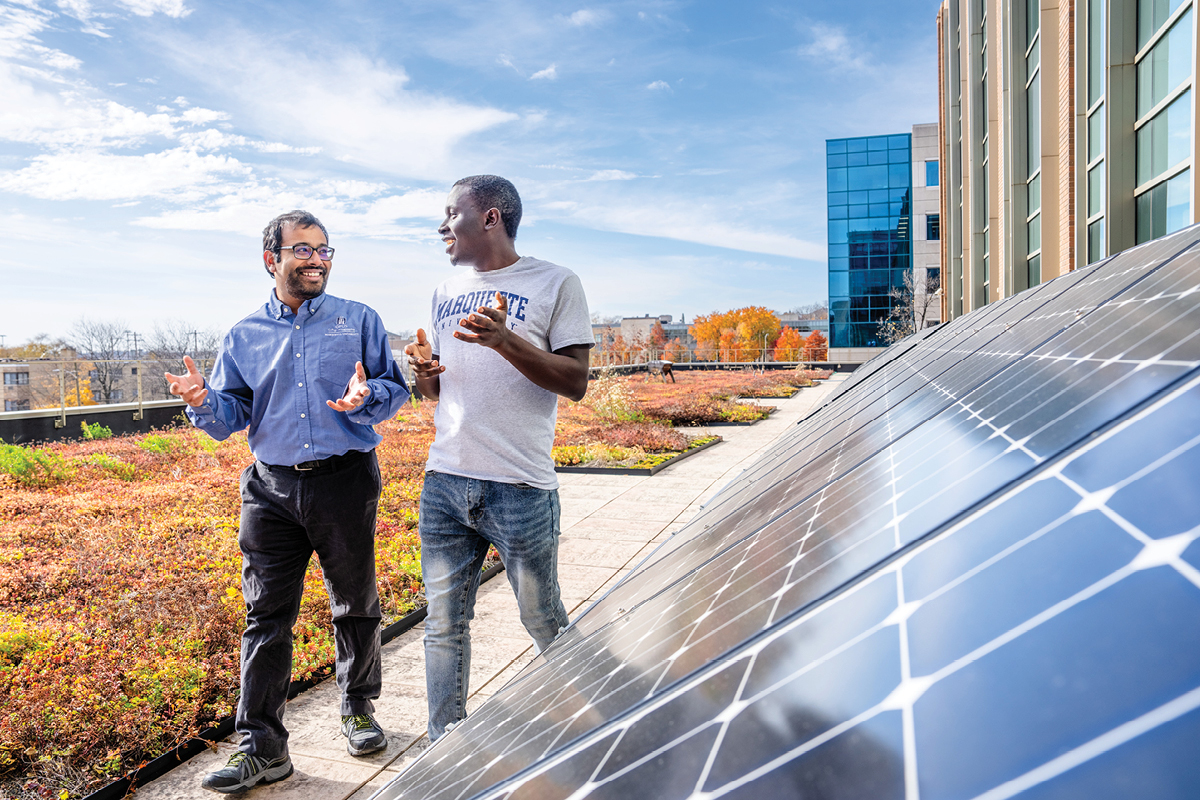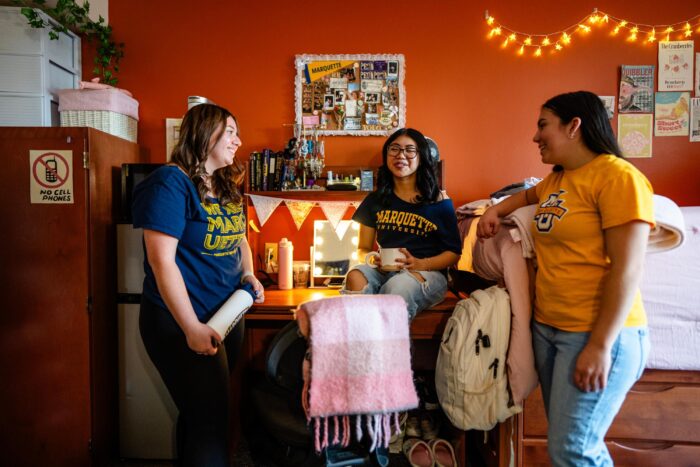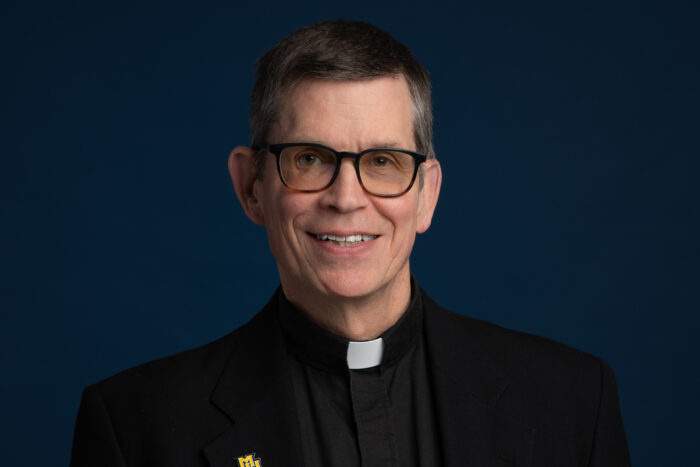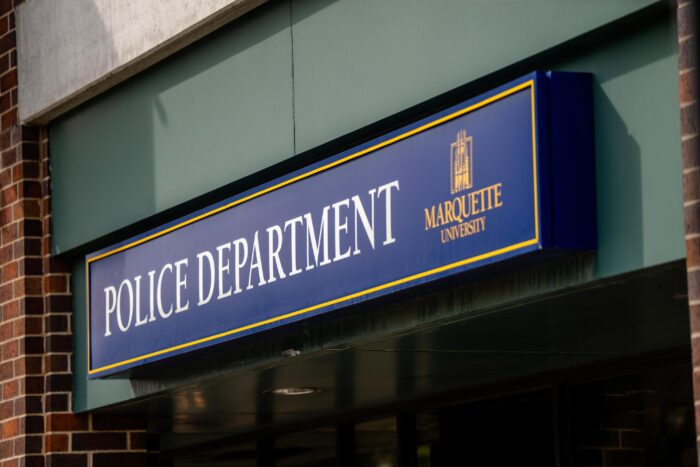Marquette is a different place than it was 10 years ago. Dotted with new buildings and reimagined spaces, the campus also has a different hum. It’s a place where fresh ideas are celebrated and collaboration is key.
In fact, “a growing ethos of collaboration” has become a distinguishing feature of Marquette, says Dr. Jeanne Hossenlopp, vice president for research and innovation. “Marquette is increasingly engaged in partnerships in the community, cross-disciplinary campus collaborations, and partnerships with external groups to support new research and educational activities on campus,” she says.
Working together — across traditional university boundaries — is how Marquette has faced challenges such as the effects of the COVID-19 pandemic on its students or the stiff demographic and economic headwinds putting pressure on higher education. It is how Marquette has renewed its commitment to themes such as cura personalis and magis at the core of its Catholic, Jesuit mission.
Not coincidentally, this culture reflects the vision and leadership — the passions — of the leader who became Marquette’s president 10 years ago, Dr. Michael R. Lovell. As Lovell says, “When you pull diverse groups together to have a common vision or a common goal to do something, the idea is that the pie just gets bigger and bigger and the impact you make gets broader and broader. Collaboration really allows you to accomplish more and to do great things.”
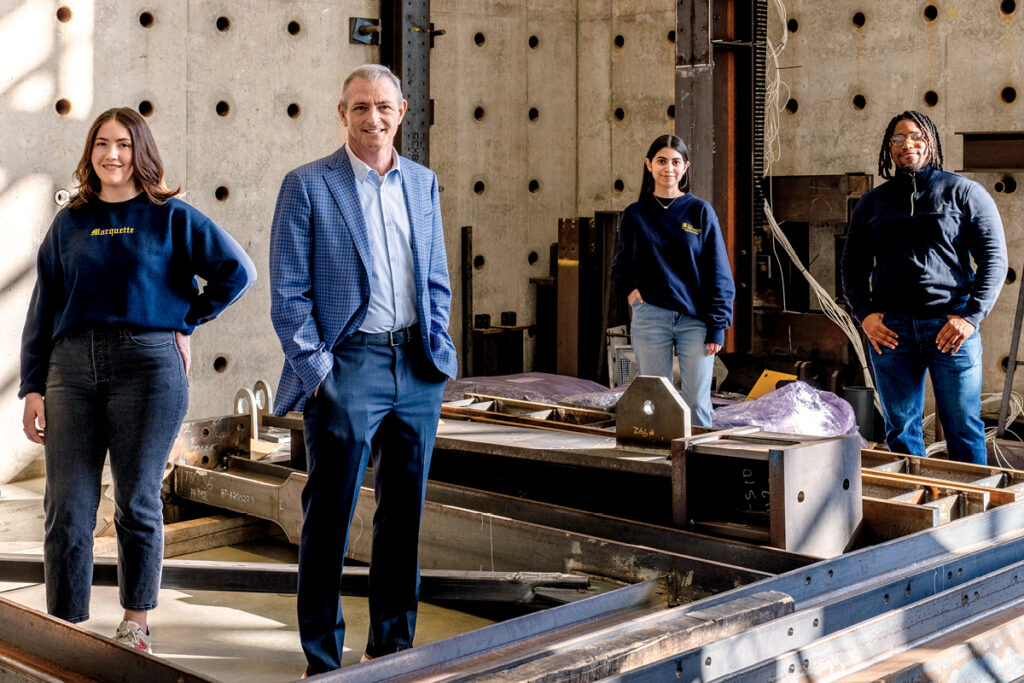
To build on Marquette’s proud legacy, collaboration and innovation are essential to meeting the ever-evolving needs of students and society. As Lovell forecast during his inauguration on Sept. 19, 2014: “We will be change agents for social innovation and justice, and work to solve many of the problems facing Milwaukee, our country and the world.”
Ten momentum builders from the last 10 years:
Faith as a foundation
Before accepting the appointment as Marquette’s 24th president, Dr. Michael Lovell prayed with his wife, Amy, arriving at a sense of peace about this opportunity to incorporate faith in his professional life. As the university’s first lay president, he has worked with campus partners, members of the Jesuit community and benefactors to elevate faith across campus.
Impressed by the many chapels, statues, and art installations on campus, Lovell developed in-person and virtual pilgrimages of these sacred spaces as his capstone project for the Ignatian Colleagues Program, a formation initiative for leaders of Jesuit universities and colleges. One of the newest sacred spaces is the Grotto of the Blessed Virgin, a proposal from the capstone achieved in collaboration with colleagues from Campus Ministry, University Advancement and Facilities Planning and Management. It is a place of devotion, inspiration and prayer whose beauty, in particular the statue of the Virgin Mary, was realized through the generosity of longtime Marquette supporter Geri “Nana” Fotsch.
A rich partnership resulted when a small group of students approached Lovell seeking opportunities to practice eucharistic exposition and adoration on campus. In response to this request, multiple opportunities for the practice are now offered weekly in St. Joan of Arc Chapel.
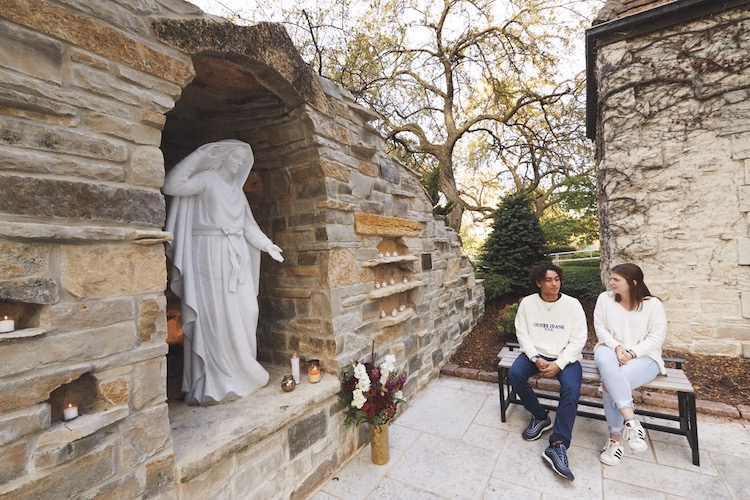
Unleashing great ideas
Recognizing that students, faculty and staff were generating great ideas but lacked a mechanism to bring them to fruition, Lovell helped create the Strategic Innovation Fund in 2014, which grew into the Explorer Challenge.
These funds have been used to develop educational programs and pathways that encourage staff and faculty initiatives and entrepreneurism among students. In the spirit of the Ignatian term magis, every department has been offered the opportunity to compete for funds to implement innovative and entrepreneurial ideas within their units and beyond.
Combined, the programs have awarded $7.8 million to 100 teams to seed new initiatives, helping them generate almost $70 million in external revenue, a healthy 790 percent return on those good ideas.
Doubling down on research
Marquette’s annual research expenditures were around $25 million when Lovell and colleagues set the ambitious goal in 2015 of doubling that funding. The university is now on track to reach that goal in the next one to two years thanks to faculty-led projects that have helped Marquette climb to 34th on U.S. News & World Report’s list of most innovative universities. Faculty-mentored research has emerged as a strength of the Marquette student experience. And 13 faculty members representing five colleges are among the top 2 percent of cited scientists in the world.
Marquette + Milwaukee
Marquette is engaged in partnerships that provide new opportunities for students, faculty and staff and support a growing number of major community-building and strategic regional initiatives. So much so that Dr. Patrick Kennelly, Arts ’07, Grad ’13, ’23, director of the Center for Peacemaking, says, “Marquette’s community involvement has evolved from one-off partnerships with individual nonprofits … to a full embrace of our community that has led to a reinvigoration at the neighborhood level.”
Marquette is an anchor institution, along with Advocate Aurora Health, Harley-Davidson, Molson Coors and Potawatomi Business Development Corp., in the Near West Side Partners. The organization has helped to revitalize and sustain business and residential areas near campus.
The President’s and Chancellor’s Challenge, developed in partnership with the University of Wisconsin–Milwaukee and Johnson Controls, provides funding for innovative, interdisciplinary work that addresses critical issues and opportunities facing the city of Milwaukee. And another key partnership, the Northwestern Mutual Data Science Institute, advances southeastern Wisconsin as a national hub for technology, research, business and talent development.
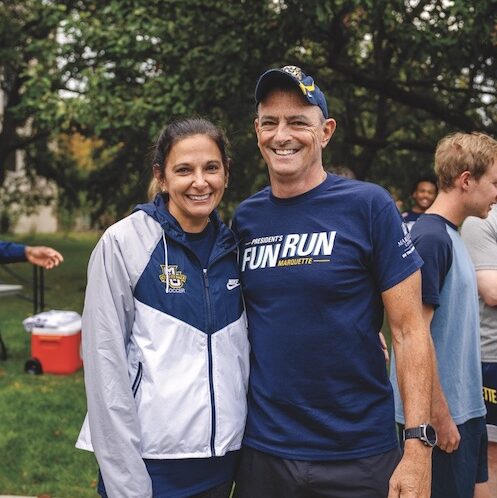
Student-powered hub
One of the most bustling spaces on campus was conceived by two undergraduate business majors. Sam Wesley and Creighton Joyce, both Bus Ad ’17, dreamed of a well-resourced workspace for student innovators from across Marquette and got it approved through the Explorer Challenge in 2015. Debuting in early 2017, the 707 Hub has become a headquarters of student innovation and entrepreneurship — and home to initiatives such as the Dorm Fund and Brewed Ideas Challenge that seed student startups and social innovation projects.
Entrepreneurship also abounds in student-led Blue & Gold Brewing, marketer of Marquette-themed coffee and beer. “Not many universities provide opportunities like Blue & Gold Brewing for their students,” says Stella Quinlan, a student in the Diederich College of Communication. “The program is evidence that Marquette stands apart in its ability to find new ways of supporting its students, while also creating valuable experiences along the way.”
Inclusion and belonging
Marquette’s Urban Scholars program — providing full-tuition scholarships to students from Milwaukee, particularly first-generation students from financially disadvantaged backgrounds — grew from 10 to 40 new students per year in 2020, a lead commitment made by Lovell and Provost Kimo Ah Yun after meetings with students who voiced concerns around Marquette’s climate for Black students.
The university adopted a Land and Water Acknowledgment in 2021 (recognized in the physical marker pictured to the left) and updated its official seal in 2022 to recognize and honor the long history of Native peoples and nations who lived on and stewarded the land and water on which the university now resides. Building a culture of belonging is a priority Marquette is continuing to focus on through its new 2031 strategic plan, Guided by Mission, Inspired to Change.
Rev. Ryan Duns, S.J., associate professor of theology, reflects on that imperative: “During classroom discussions, I often ask myself, ‘So, whose voice is missing?’ Our job as teachers is not to deliver a monologue but, rather, to empower our students to claim their voices and use their gifts and talents to pursue truth. Unless every perspective is represented, unless every voice is made present, we cannot hope to understand fully any issue.”
Breaking down silos
To prepare graduates to excel on the cross-disciplinary teams that drive industry innovation, initiatives such as Excellence in Leadership (E-Lead) and the Omron Advanced Automation Lab engage students from multiple colleges in building those skills. Another is Marquette’s Product Realization course, which Lovell has co-taught four times. The course brings together engineering and communication students to design products in response to local companies’ needs.
Marquette Law student Fhernam Batiz, Eng ’21, had the opportunity to experience Marquette’s president in the classroom. “President Lovell led by example and demonstrated that innovation does not follow a straight line,” Batiz says. “I look back at this one-of-a-kind experience that propelled my development as an engineer and see President Lovell as a symbol of resilience and leadership.”
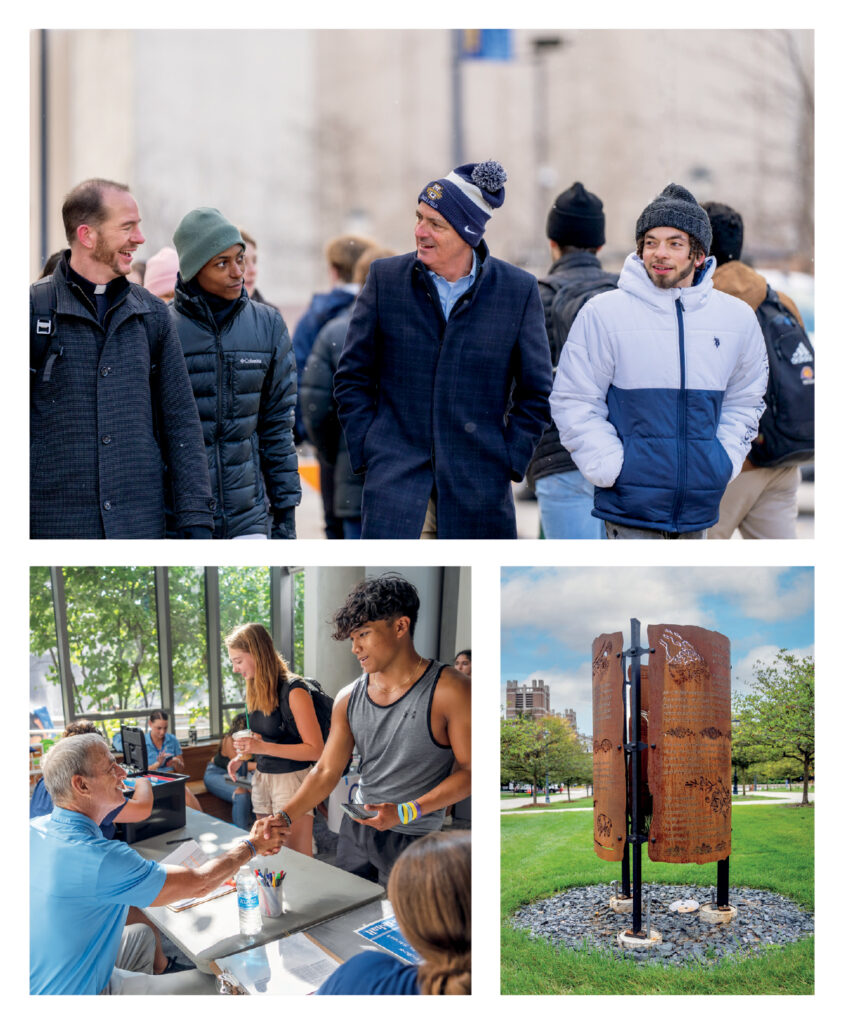
Plan of action
Shortly after Lovell’s arrival, Marquette began work on a new campus master plan. Led by Lora Strigens, vice president for planning and facilities management, it integrated the vision for academics, research and the student experience, creating a road map for Marquette’s capital projects. Ten years on, nearly every project in the plan is completed or underway — from The Commons residence hall to the new homes of the College of Nursing and Marquette Business and innovation leadership programs, and more (see next item).
“The campus environment is crafted to support every aspect of Marquette’s mission and to enhance all aspects of the student experience,” Strigens says. “The master plan presented an opportunity for us to engage the campus community in thinking about how the future of the physical campus could support the ambitious goals of our faculty, staff and students. We’ve worked to create a variety of campus spaces that enhance the well-being and sense of belonging of our entire Marquette community.”
Student-centered vision and philanthropy
Marquette’s historic Time to Rise campaign has surpassed its $750 million goal under the leadership of Tim McMahon, vice president for university advancement, and fueled much of the physical transformation of campus. The campaign, which culminates at the end of June, has kept a strong emphasis on students, scholarship funding and underwriting significant projects such as the Lemonis Center for Student Success and the Wellness + Helfaer Recreation facility that position Marquette as a leader in supporting the academic, physical, mental and spiritual health of all students, as well as their career aspirations. “Time to Rise has showcased what our university community can accomplish when we come together to realize our undeniably bright future for Marquette,” McMahon says.
Where next?
With higher education facing generational challenges, it’s important to be guided by sound strategies aligned with Marquette’s strengths and mission. Fortunately, that describes the university’s new strategic plan, Guided by Mission, Inspired to Change, which resulted from campuswide discernment, exploration and collaboration.
As Marquette looks ahead to the celebration of its 150th anniversary in 2031, the plan affirms the university’s commitment to its mission, vision and guiding values and the tremendous value of a Catholic, Jesuit education grounded in the liberal arts that forms thoughtful leaders with the knowledge and passion needed to transform the world.
“The reason why we commit to these jobs is because we want to help our students achieve their goals and dreams and become changemakers. I have seen firsthand how a Marquette education transforms them,” Lovell explains. “I believe that, now more than ever, we need Marquette graduates who make the world a better place by living out our Catholic, Jesuit values.”
